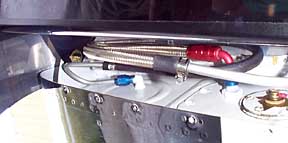RVG8tor
Well Known Member
I could not find a post on point. I need an adapter to tie into my fuel line for a purge return line. I found what I needed at Summit Racing. My question is has anyone used these fittings, will they screw into the AN male connectors on the Andair fuel selector? I guess I am asking if you can mix and match them. I have read about the differences and I know there is some difference the the thread design but no the pattern, it seems there area a lot of posts with recommendations to Summit Racing fittings.
I would like to hear from those flying with the fittings and if there have or have not been problems.
Cheers
I would like to hear from those flying with the fittings and if there have or have not been problems.
Cheers





